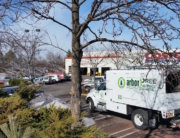Choosing Trees in Central Oregon: Native or Non-Native?
So, you’ve decided you want to plant a few trees on your property, but you don’t know if you want to go the “native” or “non-native” route. We’ll try to give you some information that might help you understand the debate on native vs. non-native and help you in choosing trees in Central Oregon.
A native, or indigenous plant is one that was present in the region prior to European-American settlement. Native trees have evolved to thrive in particular soil types, climate, and sunlight of that region. Native trees also define the look and feel of a region. Central Oregon would be a different place if it weren’t for our grand ponderosa pines.
A non-native plant is one that was brought to the region by humans either deliberately or by accident. In Victorian times, the introduction of “new” plants was something to celebrate—even if they didn’t know any better about the impact that these introduced species might have caused. However, non-native trees have their purpose too, especially in the urban forest.
You’ll notice in Central Oregon that we have many non-native trees that line city streets and sidewalks, grow in peoples yards, and even have some presence in rural parks and natural areas. These trees serve a purpose too! They can be placed in areas where native trees might not do so well, such as in tight corridors or urban areas. A maple works well on Wall Street in downtown Bend—a giant ponderosa pine—not so much.
While it is true that native trees specifically support native wildlife and birds, non-native trees, if they have branch structure and other characteristics similar to native trees, can also provide habitat for wildlife and birds. (Need more squirrels in your yard?)
Pests are always to be a concern and non-native trees can sometimes have potentially more pest problems than natives. However, pests prey on unhealthy, aged or weak trees, so keeping healthy, properly pruned and cared for trees is the best bet in combating pests.
A word about invasive species. Invasive species are those that are not native to a given ecosystem and that cause, or are likely to cause economic or environmental harm. Fortunately, we don’t have much for invasive species trees, but they are definitely to be avoided! We do have an issue with invasive weeds. Visit Let’s Pull Together for more information.
How to decide and choose well:
- Take a good look at your site. If there is enough rooting and canopy space for a large tree, would a native one fit your needs?
- Think about maintenance needs. Try to choose trees that don’t need chemicals to remain disease and pest free. Also think about what you are willing to do every year to care for that tree—raking pine needles can be a daunting task each year.
- Be prepared to mulch and water any tree within the first few years of planting.
- Utilize your local reputable nursery for purchasing trees. Talk to people and learn as much as you can.
- Buy high quality trees, with good branch structure, undamaged bark and healthy roots.
Urban forests require planning, care and ongoing maintenance. Different types of trees all have their place in our yards, on our streets and in our parks.
Learn more about native and non-native trees in Oregon here.
Contact us for any questions about your trees!
–Mike D., 541-480-4223






